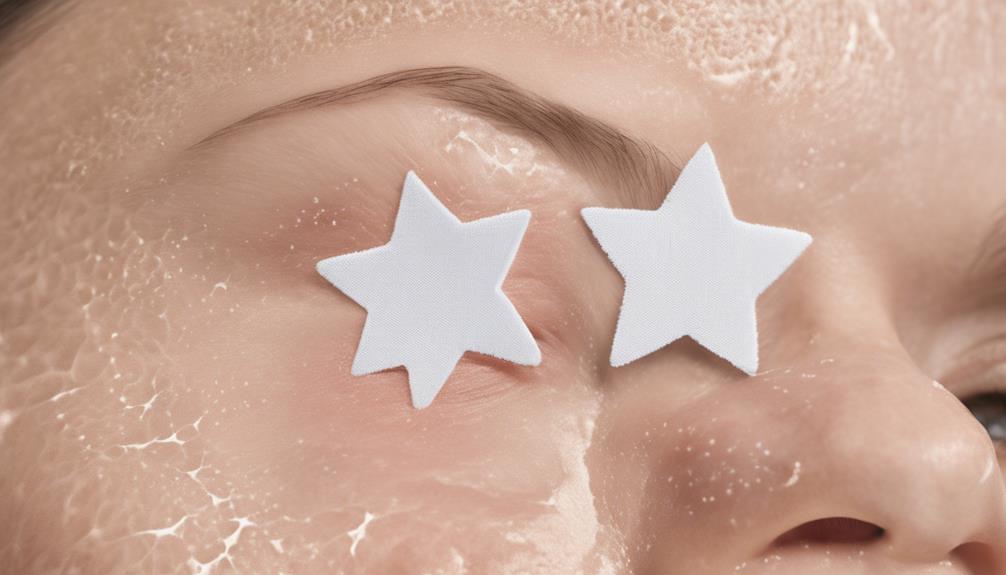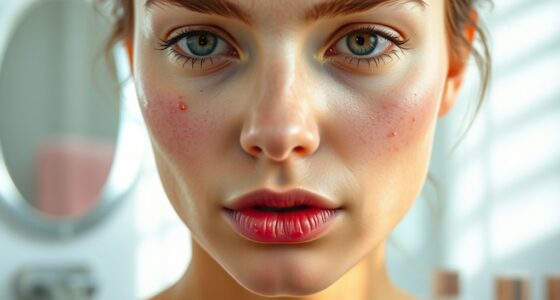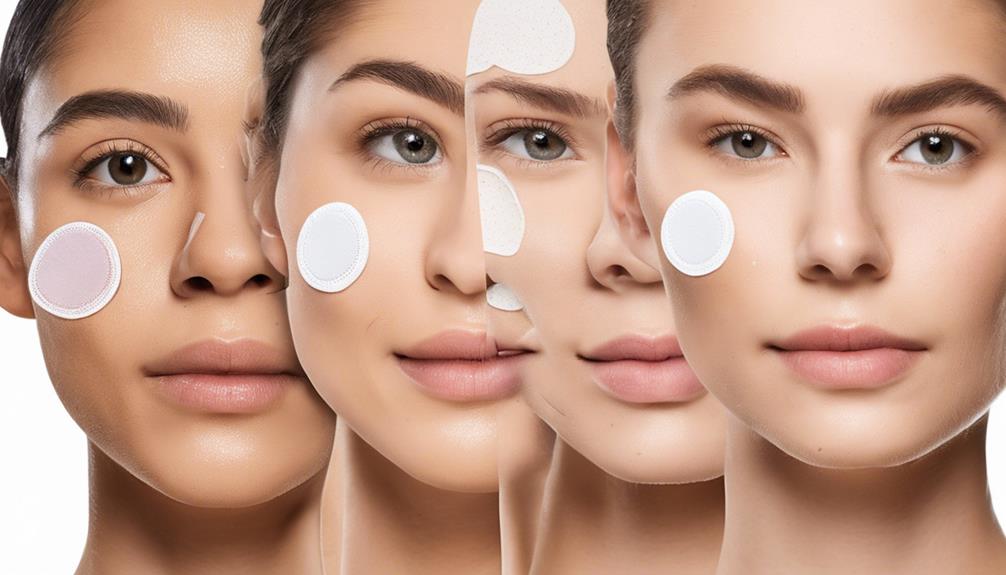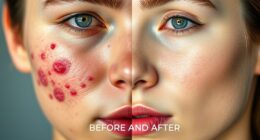Using acne patches over moisturizer is definitely a skincare faux pas. The moisturizer creates a barrier that reduces the patch’s adhesion, slowing down healing and risking premature removal. This setup can also allow bacteria to interfere with treatment and diminish the patch’s active ingredients. For the best results, always apply patches on clean, dry skin instead. Want to discover more tips and best practices for using acne patches? Keep exploring!
Key Takeaways
- Applying acne patches over moisturizer can hinder adhesion, reducing their effectiveness and prolonging healing time.
- Moisturizers create a barrier that may interfere with the patch’s ability to absorb impurities effectively.
- Active ingredients in the patch might lose potency when placed over a moisturized surface.
- For optimal results, acne patches should be applied to clean, dry skin without any moisturizers.
- While using patches offers quick fixes, their effectiveness diminishes with improper application techniques.
Understanding Acne Patches: How They Work
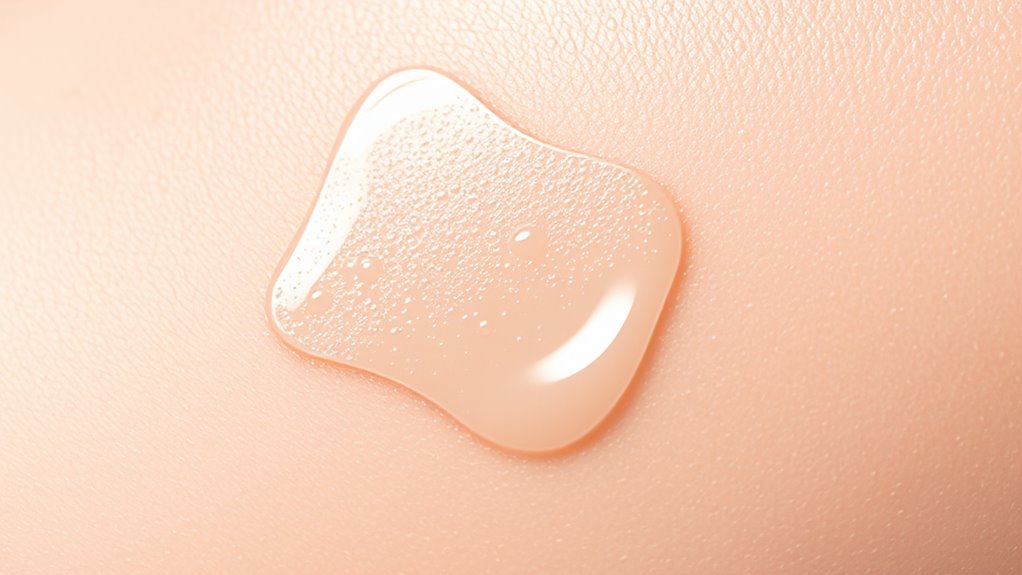
When it comes to treating acne, understanding how acne patches work can be a game-changer for your skincare routine.
These patches, made from hydrocolloid materials, create a protective barrier that absorbs excess fluids and pus, reducing pimple size and promoting healing. Some contain medicated ingredients like salicylic acid or tea tree oil to target acne-causing bacteria effectively. Additionally, they are known for their ability to absorb fluids while drawing out impurities from the pimple.
Microneedling patches, with tiny spikes, deliver ingredients deeper into the skin for more severe breakouts. They also maintain a moist environment that reduces the risk of scarring while preventing further irritation.
The Role of Moisturizer in Skincare

Moisturizers play an essential role in your skincare routine, as they not only hydrate your skin but also protect its barrier. By sealing in moisture, they help maintain hydration and prevent dryness. This barrier shields your skin from external aggressors like pollution and UV rays, which is crucial for protecting skin integrity. Regular use improves skin texture, softening it and reducing fine lines.
If you have acne-prone skin, moisturizing can actually help balance oil production, potentially reducing breakouts. You can choose from various formulations—lotions, creams, or gels—tailored to your skin type. Ingredients like humectants and oils work to keep your skin nourished. Incorporate a moisturizer after cleansing to maximize benefits and support overall skin health.
Consistency is key for achieving that healthy glow.
Potential Issues With Using Patches Over Moisturizer
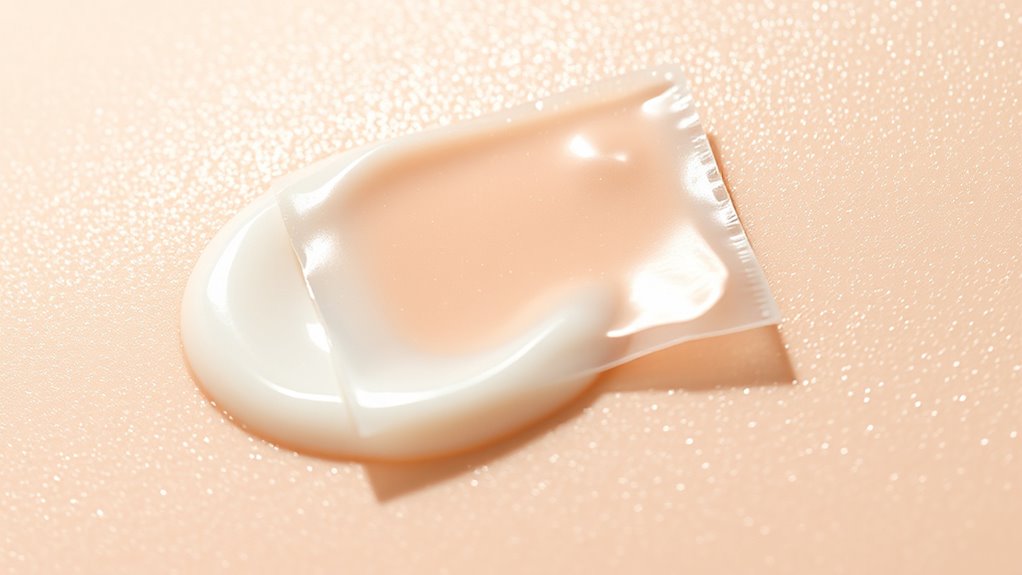
Applying acne patches over moisturizer can lead to several complications that undermine their effectiveness.
First, the moisturizer creates a barrier, preventing the patch from adhering directly to your skin, which can greatly reduce its ability to absorb impurities and excess oil. This lack of proper adhesion may result in slower healing and even cause the patch to fall off prematurely. Additionally, if the patch doesn’t seal well, it won’t protect the blemish effectively, allowing bacteria to interfere with treatment. Furthermore, any active ingredients in the patch may lose their potency due to the layer of moisturizer beneath. Consequently, for best results, it’s essential to apply patches on clean, dry skin before using moisturizer. Proper adherence to skin is crucial for maximizing the patch’s effectiveness.
Best Practices for Acne Patch Application
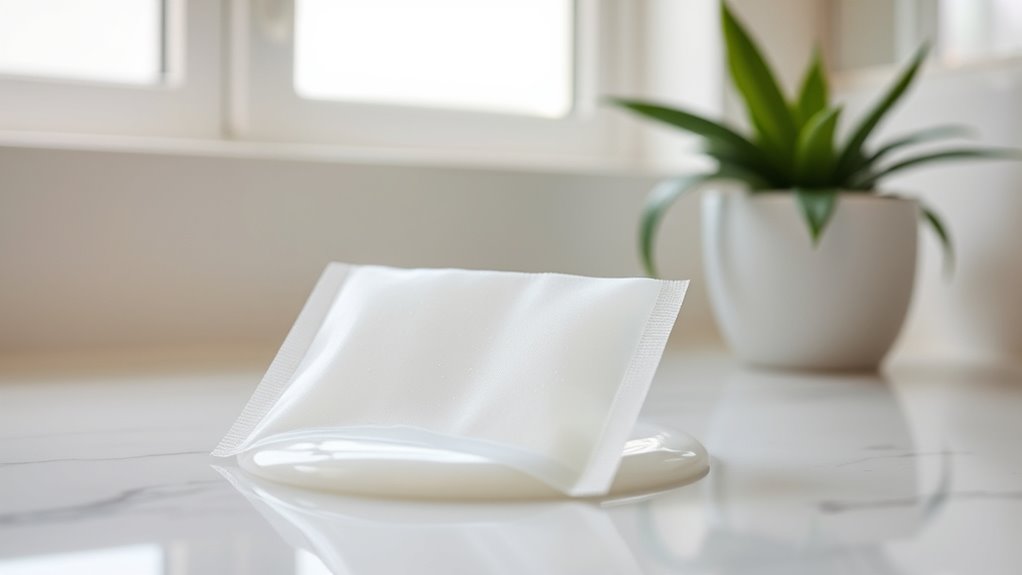
To achieve the best results with acne patches, proper application techniques and preparation are key. Start by cleansing your skin thoroughly and patting it dry to guarantee the patch sticks well.
Use clean hands to handle the patch, selecting the right size for the blemish. For maximum effect, center the patch over the spot and press it gently to secure it, avoiding air bubbles.
Apply patches on dry skin, and don’t use them over moisturized areas, as pimple patches are designed to adhere best to clean, dry skin. Wear the patch for 6 to 12 hours, ideally overnight, and replace it if it turns white or remove it after the recommended time.
After removal, clean the area and resume your regular skincare routine, ensuring your skin stays hydrated.
Weighing the Benefits and Limitations of Acne Patches
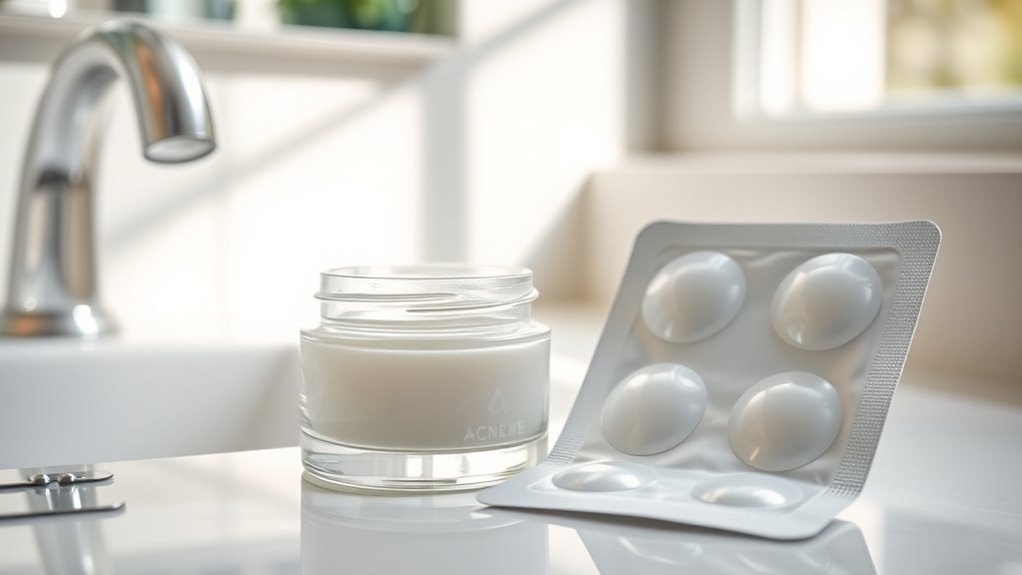
While acne patches offer a convenient solution for spot treatment, weighing their benefits against potential limitations is essential for effective skincare.
These patches provide a quick fix for individual pimples, reducing the urge to pick and minimizing the risk of scarring. They absorb impurities while creating a moist environment, which can help reduce inflammation and promote healing. However, they primarily target surface-level issues and may not penetrate deep enough for cystic acne. Additionally, the ingredients can irritate sensitive skin or cause allergic reactions.
Remember that acne patches don’t cure acne; they merely address the symptoms. Their effectiveness can vary, so it’s important to assess your skin type and the specific type of acne you’re dealing with for best results. Hydrocolloid patches help maintain moisture and can reduce the urge to pick at pimples, enhancing the healing process.
Frequently Asked Questions
Can I Use Multiple Patches on Different Pimples at Once?
Yes, you can definitely use multiple patches on different pimples at once!
Just make sure your skin is clean and dry before applying them. This helps each patch adhere properly and work effectively.
Choose the right type of patch for each pimple, and avoid overdoing it to prevent irritation.
Applying patches can speed up healing and protect your skin, so it’s a great way to tackle multiple blemishes simultaneously!
How Long Should I Leave an Acne Patch On?
You should leave an acne patch on for about 4-8 hours, depending on the type of blemish.
For whiteheads, aim for 6-8 hours, while cystic acne might need longer.
Overnight application often yields the best results, but daytime use can still be effective if you’re short on time.
Just make sure your skin is clean and dry before applying, and remove the patch when it turns white or cloudy.
Are There Specific Brands of Patches That Work Best?
When choosing acne patches, consider your specific needs.
Hero Cosmetics Mighty Patch Original is great for surface pimples, while ZitSticka’s microdart technology targets deep cystic acne.
COSRX offers a budget-friendly option for quick healing, and Starface includes salicylic acid for body acne.
If you want hydration too, try Proactiv’s patches.
Each brand utilizes different ingredients, so pick one that best matches your skin type and acne concerns for ideal results.
Can I Apply Makeup After Removing the Patch?
Imagine your skin as a canvas, freshly cleared of imperfections. After removing the acne patch, you can definitely apply makeup.
Just guarantee your skin’s clean and dry. Go for lightweight, oil-free products to avoid clogging your pores.
Use gentle techniques to apply, treating your skin like the delicate masterpiece it is. A translucent foundation will help you achieve a flawless finish, blending seamlessly with your natural glow.
Don’t forget to set it for lasting wear!
What Should I Do if a Patch Falls Off?
If a patch falls off, don’t panic.
First, check the area to see if it’s clean and dry before reapplying a new patch.
Make certain to apply it directly to the blemish without any products underneath.
If you’re having consistent adhesion issues, it might be time to evaluate your skincare routine or the type of patch you’re using.
Conclusion
In the world of skincare, it’s essential to remember that “you can’t have your cake and eat it too.” While using acne patches over moisturizer may seem like a smart move, it can hinder the patches’ effectiveness. Moisturizers can create a barrier that prevents the patch from adhering properly and absorbing the impurities. To get the best results, apply patches on clean, dry skin. By prioritizing proper application, you can maximize the benefits of your acne treatment.



